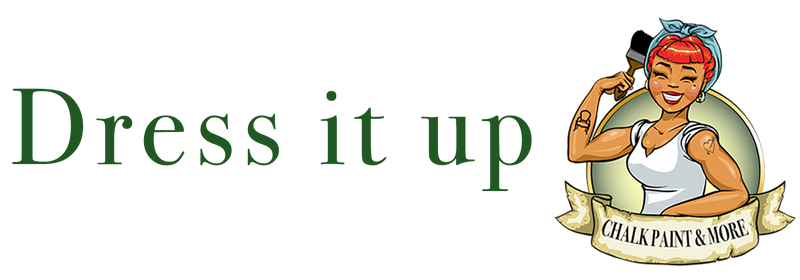Using Annie Sloan Chalk Paint
Working with Chalk Paint
Working with Chalk Paint is incredibly fun and simple, but for the best results, it’s important to read the information below before you start!
How to Proceed and What You’ll Need
Step 1 – Preparation
First, choose your favorite Chalk Paint color! Make sure the surface you want to paint is clean and dry.
We usually degrease furniture with Fusion TSP, the best degreaser, or St. Marc (available at any hardware store; use 2 caps in half a bucket of warm water, rinsing is not necessary), or with warm water and a splash of ammonia. Work carefully with ammonia — do not inhale, and read the instructions on the packaging! A regular household soap solution also works, but rinse with clean water just to be safe. Never use Dasty or other aggressive cleaners, as this can cause adhesion problems.
Let the surface dry completely, and you’re ready to go! SANDING AND PRIMING ARE NOT NEEDED! You can paint directly over old paint or wax layers.
Step 2 – Painting
-
For a rustic look: Choose a full, round, or oval brush with the right firmness and flexibility (such as one of Annie Sloan’s oval brushes) and apply the paint in a crisscross motion.
-
For a smooth, clean finish: Use a flat brush, thin the Chalk Paint slightly with water to a creamy consistency, and paint in straight strokes like traditional painting.
Apply one or two coats, depending on coverage, the surface, and your personal preference (two coats usually look better than one). Let the Chalk Paint dry between coats, about one hour at room temperature.
For plastic or very smooth surfaces, wait a bit longer as the paint cannot absorb easily. You can lightly roughen the surface (different from sanding) with a sanding pad or fine sandpaper to give it more grip.
Step 3 – Finishing with Soft Wax
Once you’re happy with the result, finish your piece with Soft Wax Clear. This is necessary for a durable finish. The Chalk Paint and wax together form a strong protective layer, and you can clean the furniture with a damp cloth and easily remove stains.
-
The waiting time between painting and applying wax depends on the surface and humidity. For cabinets, we usually wait about 3 hours. For plastic kitchen cabinets, it’s better to wait overnight.
-
Tabletops and heavily used surfaces need 3 thin layers of Soft Wax, with a 24-hour interval between layers. For a cabinet, usually one layer of Soft Wax Clear is enough.
Application tips:
-
Apply wax with a lint-free cloth (like an old tea towel) or a special wax brush. A brush is faster and easier than a cloth.
-
Always wipe away excess wax immediately. Apply wax like hand cream — enough so it soaks in and covers everything. Work in small sections (about the size of your forearm) rather than the entire piece at once.
-
Wipe off excess wax with firm strokes — do not rub, as that will make the wax shiny. Use a clean, lint-free cloth (old T-shirt or tea towel) to remove it.
-
Check with a flat hand that the wax feels smooth, not sticky. Regularly monitor the thickness this way.
Even if the wax feels dry, it takes 14–21 days to fully cure. Be careful with sharp objects, and use placemats and coasters on tables. Avoid vigorous vacuuming near cabinets initially.
For ornaments, carvings, beadwork, and materials like rattan, a wax brush is necessary. Cloth or sponge won’t work. Waxing with a brush is also more durable.
Floors (wood and stone) are not finished with wax but with Annie Sloan Lacquer.
For outdoor projects, always use Lacquer, never wax.
Step 4 – Optional Aging
You can lightly sand your piece for an aged look or use Soft Wax Dark or Black for additional effects.
If you want more detailed instruction on these techniques, we recommend attending our Annie Sloan Painting Techniques Workshop!

